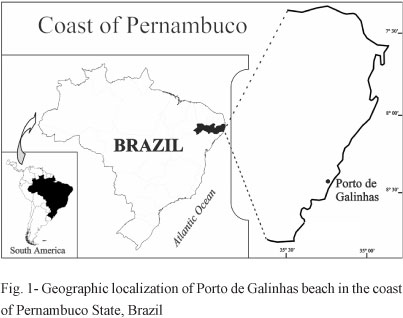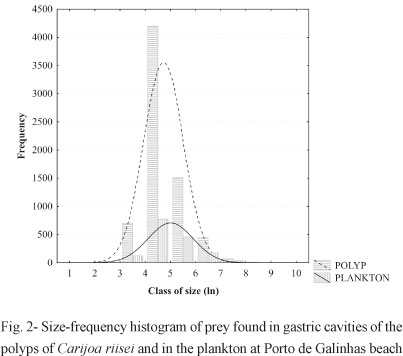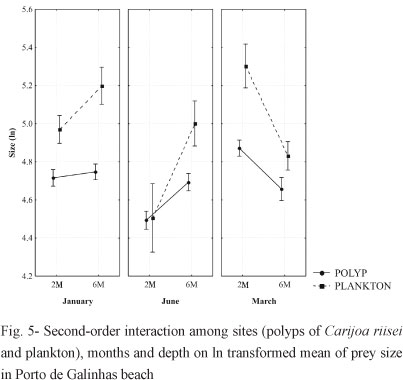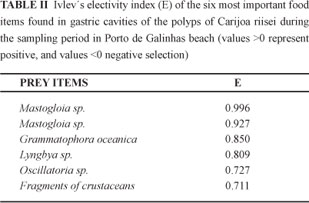This study was designed to evaluate prey selection (type and size) by the octocoral Carijoa riisei at Porto de Galinhas beach, Northeast Brazil, relating prey availability in plankton with the content inside polyps. Diatoms and cyanophytes were the predominant items found in both polyp gastric cavity and plankton. A correlation between prey abundance in the plankton and in the gastric cavity of C. riisei polyps was observed. Mastogloia sp. showed the highest positive electivity index (0.99). Benthonic items were found, with 0.51% of total consumed preys. The size amplitude of prey items in the plankton was similar to those found inside the polyps, although the mean prey size in the polyps (112.7 µm) was significantly lower than the value found in the plankton (240.5 µm). Thus, the study indicates some size selectivity in this species or at least size limitation. From the results, we concluded that the octocoral C. riisei is an opportunistic polyphagous species in the Brazilian northeast coast, showing suspensivorous passive filtering feeding habit with a preference for small prey items and evidencing its important ecological role in the reefal ecosystem as responsible for bidirectional energy transference between pelagic zones and the benthos.
Alcyonacea; natural feeding; prey selectivity; prey availability; trophic ecology








